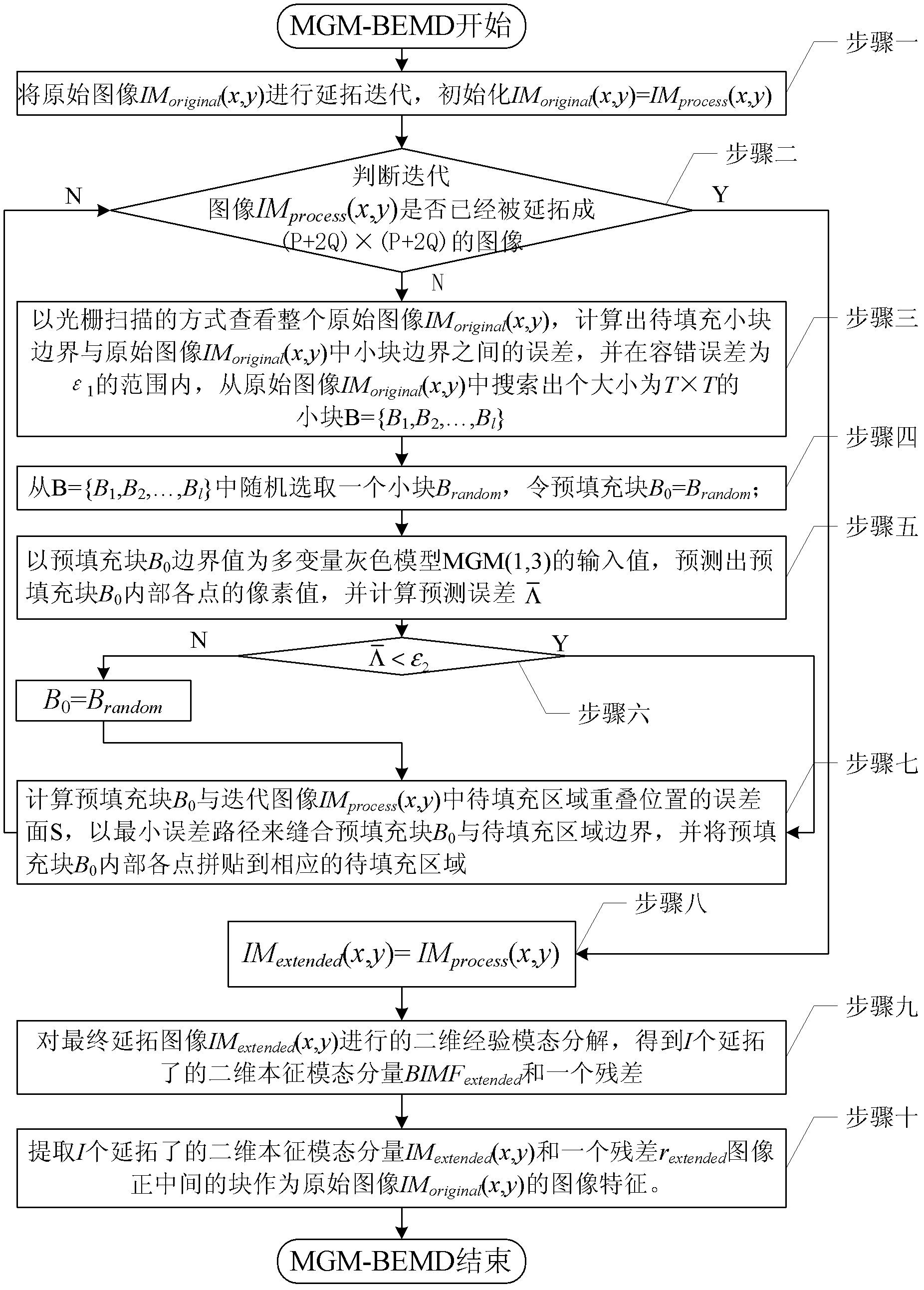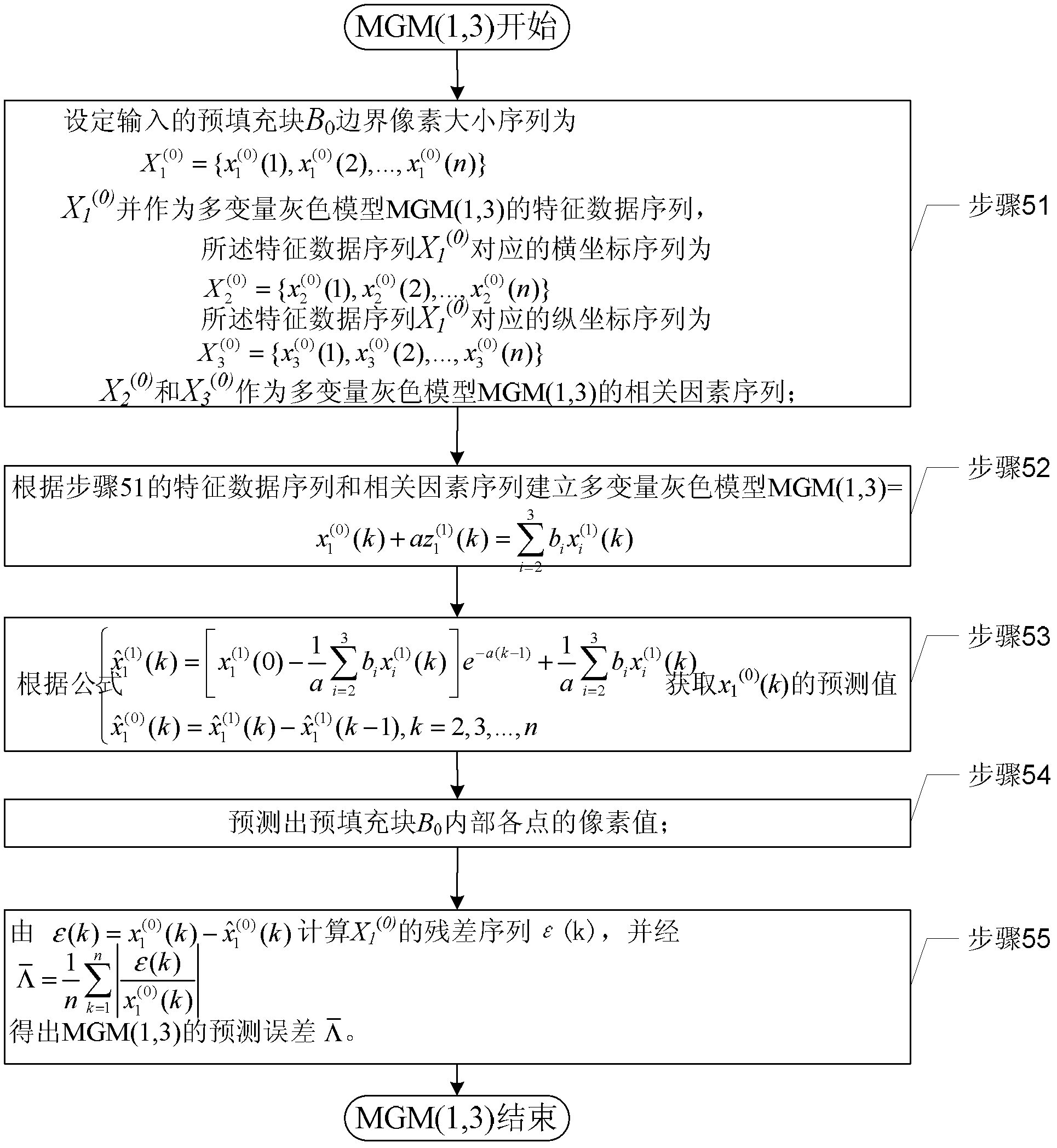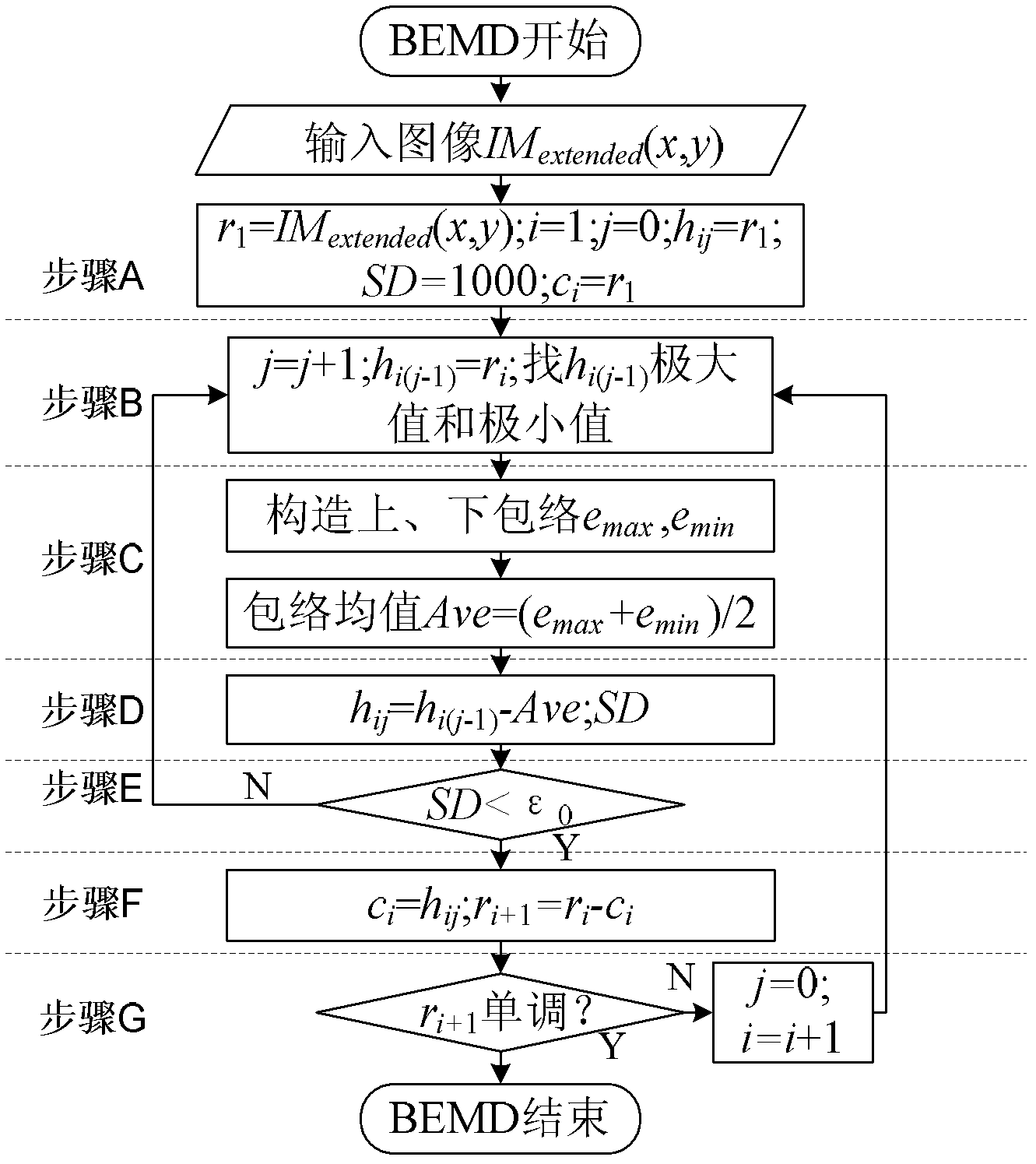Method for extracting image characteristics by multivariate gray model-based bi-dimensional empirical mode decomposition
An empirical mode decomposition and gray model technology, applied in the field of image processing, can solve problems such as the inability to effectively extract image intrinsic information, and achieve the effects of high short-term prediction accuracy, suppression of end-point effects, and less data volume.
- Summary
- Abstract
- Description
- Claims
- Application Information
AI Technical Summary
Problems solved by technology
Method used
Image
Examples
specific Embodiment approach 1
[0033] Specific implementation mode one: the following combination figure 1 To describe this embodiment,
[0034] This embodiment is realized through the following technical solutions: For a given image IM original (x, y), let its original size and extended size be P×P and (P+2Q)×(P+2Q) respectively. The continuation area of , respectively, is A, B, C and D four blocks. from IM original Select the best matching block B of T×T (T0, using a multivariate gray model MGM(1,3) (where "M" stands for multivariate, "G" stands for gray, "M" stands for model, "1" stands for model order 1, and "3" stands for model variables number is 3) predict B 0 The internal pixel values are filled into the corresponding positions of the four blocks A, B, C, and D, and the small blocks are stitched by the minimum error path.
[0035] A method for extracting image features using a two-dimensional empirical mode decomposition based on a multivariate gray model described in this embodiment, the m...
specific Embodiment approach 2
[0049] Specific implementation mode 2: This implementation mode further explains the implementation mode 1, and the error tolerance ε in step 3 1 = 0.1.
specific Embodiment approach 3
[0050] Specific implementation mode three: this implementation mode further explains implementation mode one, and the error threshold ε in step six 2 = 0.2.
PUM
 Login to View More
Login to View More Abstract
Description
Claims
Application Information
 Login to View More
Login to View More - R&D
- Intellectual Property
- Life Sciences
- Materials
- Tech Scout
- Unparalleled Data Quality
- Higher Quality Content
- 60% Fewer Hallucinations
Browse by: Latest US Patents, China's latest patents, Technical Efficacy Thesaurus, Application Domain, Technology Topic, Popular Technical Reports.
© 2025 PatSnap. All rights reserved.Legal|Privacy policy|Modern Slavery Act Transparency Statement|Sitemap|About US| Contact US: help@patsnap.com



